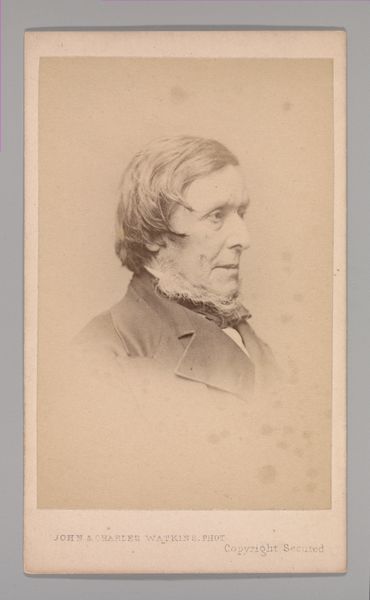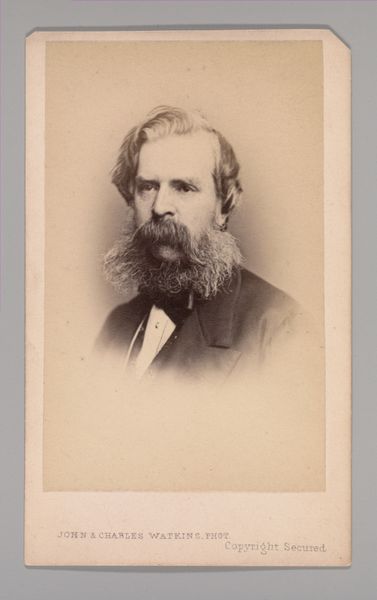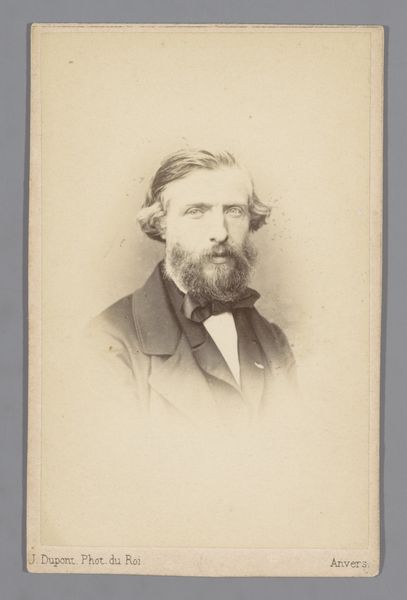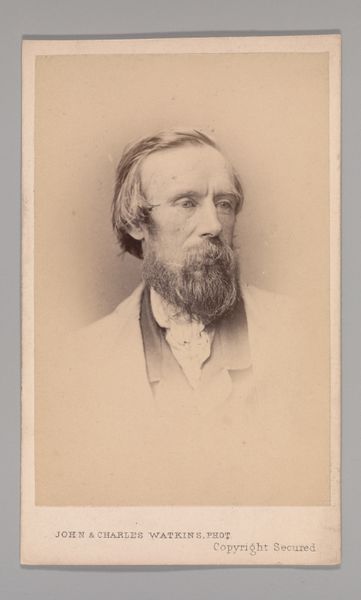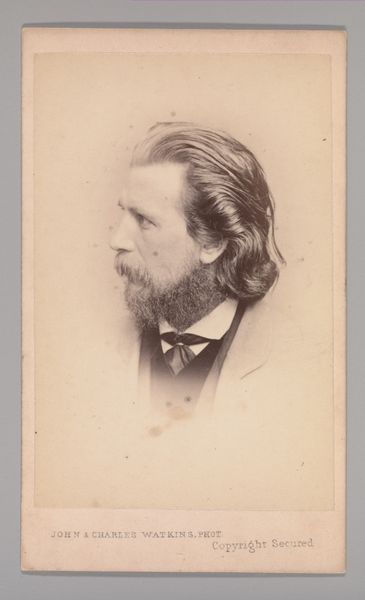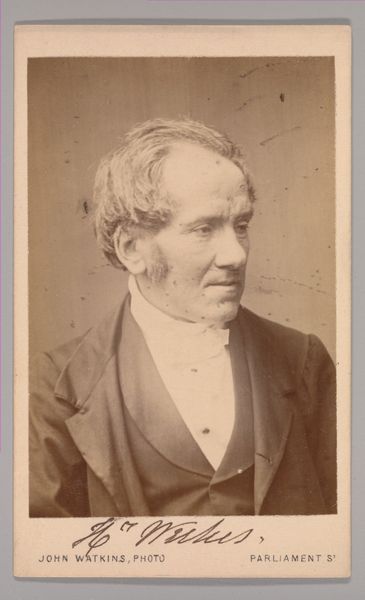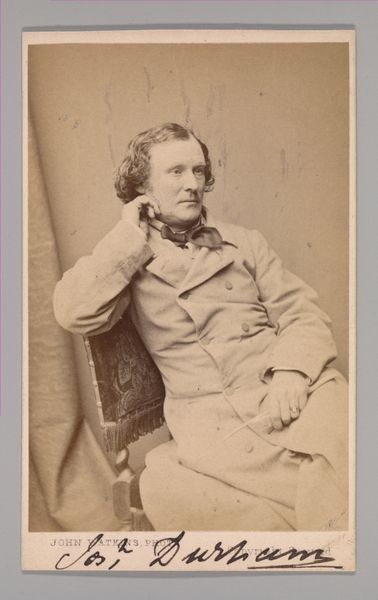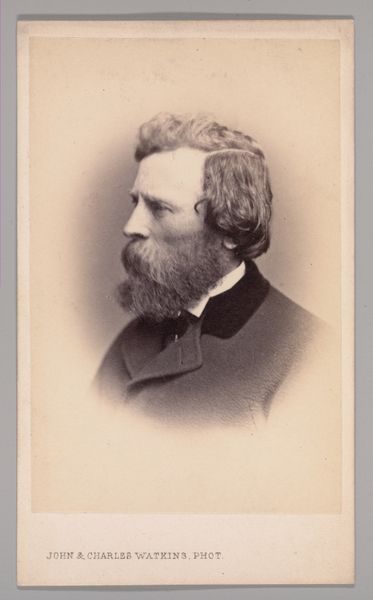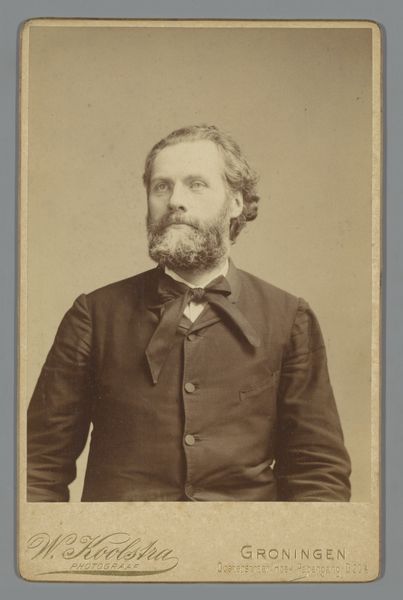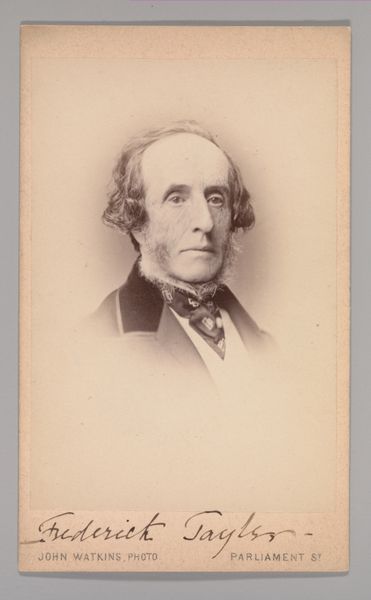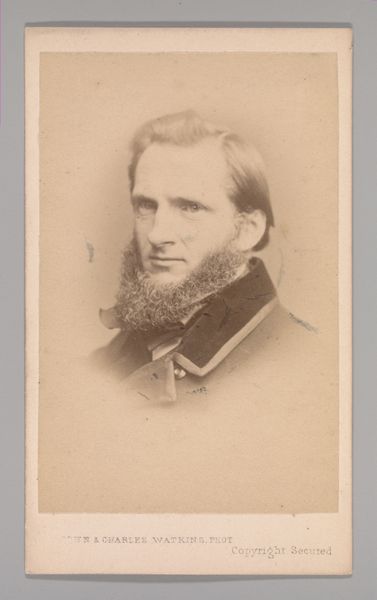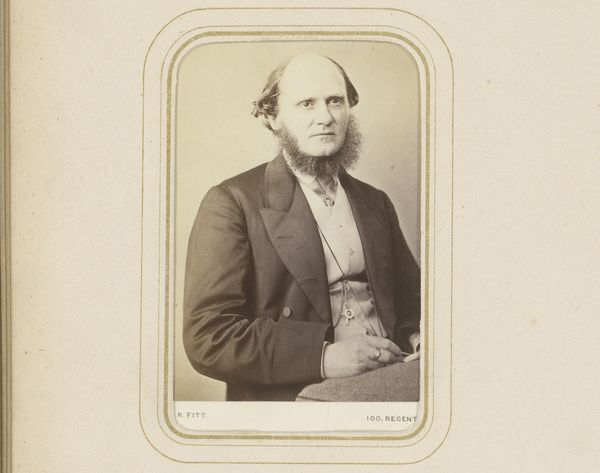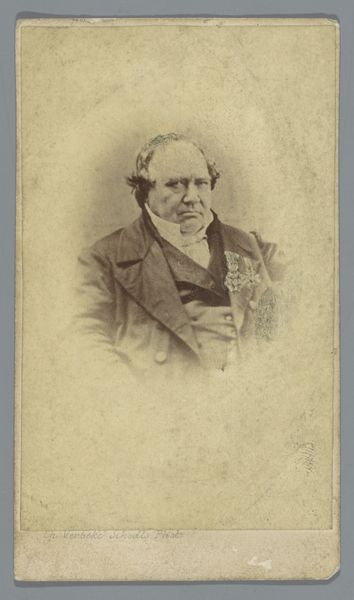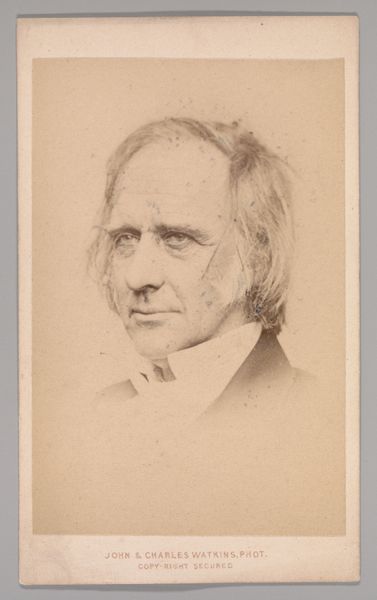![[John Gibson] by John and Charles Watkins](/_next/image?url=https%3A%2F%2Fd2w8kbdekdi1gv.cloudfront.net%2FeyJidWNrZXQiOiAiYXJ0ZXJhLWltYWdlcy1idWNrZXQiLCAia2V5IjogImFydHdvcmtzL2Y0OTg4MzFkLWI1NDQtNGNkZi05YzEyLTNjNjliM2ZiYWI0My9mNDk4ODMxZC1iNTQ0LTRjZGYtOWMxMi0zYzY5YjNmYmFiNDNfZnVsbC5qcGciLCAiZWRpdHMiOiB7InJlc2l6ZSI6IHsid2lkdGgiOiAxOTIwLCAiaGVpZ2h0IjogMTkyMCwgImZpdCI6ICJpbnNpZGUifX19&w=3840&q=75)
photography, albumen-print
#
portrait
#
photography
#
men
#
albumen-print
Dimensions: Approx. 10.2 x 6.3 cm (4 x 2 1/2 in.)
Copyright: Public Domain
Curator: Here we have a portrait of John Gibson, created by John and Charles Watkins in the 1860s, using the albumen print process. Editor: Immediately, what strikes me is a certain pensiveness etched onto his face. It’s almost a Victorian melancholy, softened by the sepia tones. The play of light gives such character to his visage, doesn't it? Curator: Absolutely. These early photographs, especially albumen prints, had a remarkable ability to capture character. Gibson was a notable sculptor, and this image must be contextualized within Victorian ideals of masculinity and the visual representation of intellectual labor. Editor: It feels like he’s gazing beyond the lens, lost in some profound thought or maybe even grappling with his art. I bet the light in the photographer's studio was completely different than how he would've composed it within his sculptures. The man looks like he has something urgent to say. Curator: Photography during this era was still forging its own identity. So this portrait would inevitably converse with, and perhaps even attempt to elevate, the social standing of the sitter. The very act of commissioning a portrait signaled specific socio-economic statuses. We must think about the politics of representation at play. Editor: I'm curious, how did posing in photographs like this contrast with sculpting marble statues? Both capturing a person, but such different worlds of artistic form. I think this medium feels intensely personal. Curator: The albumen print medium involved coating paper with egg white, resulting in sharp, detailed images. In the 1860s this would have provided artists new modes for artmaking that offered specific and contrasting methods for the study of light and form in representational practice. Consider, too, who had access to these portrait studios. This was part of shaping identity for very few. Editor: The texture reminds me of old manuscripts, a hint of the past clinging to the image itself. He carries himself like an ancient, learned philosopher from stories past. Thanks for walking me through. It feels great to find small pieces to ponder as I move along to other portraits in the collection. Curator: Precisely, this portrait operates as a poignant record and as an archive, providing insights into identity, artistry, and Victorian visual culture.
Comments
No comments
Be the first to comment and join the conversation on the ultimate creative platform.
